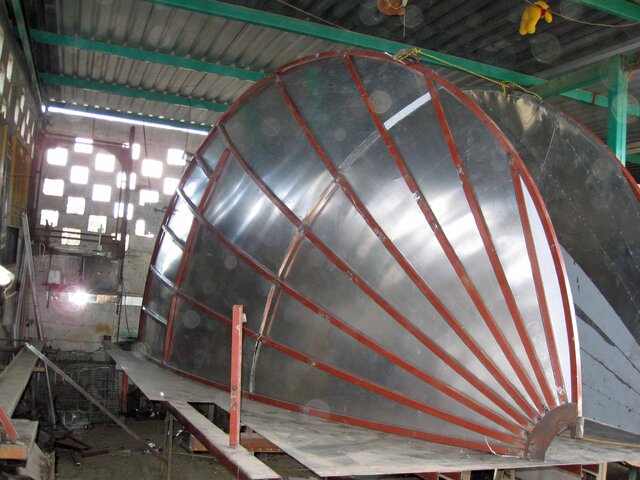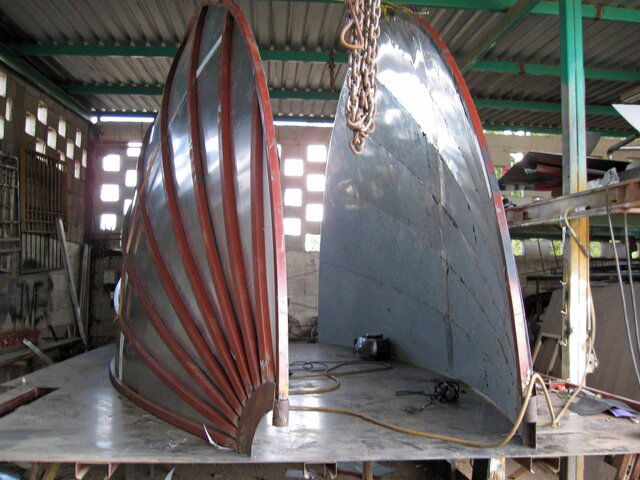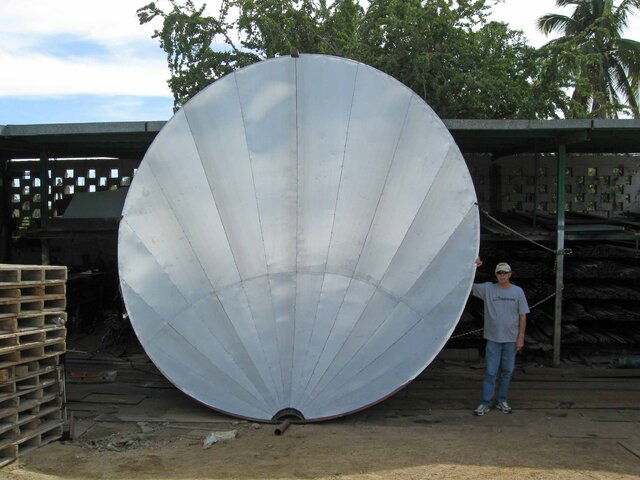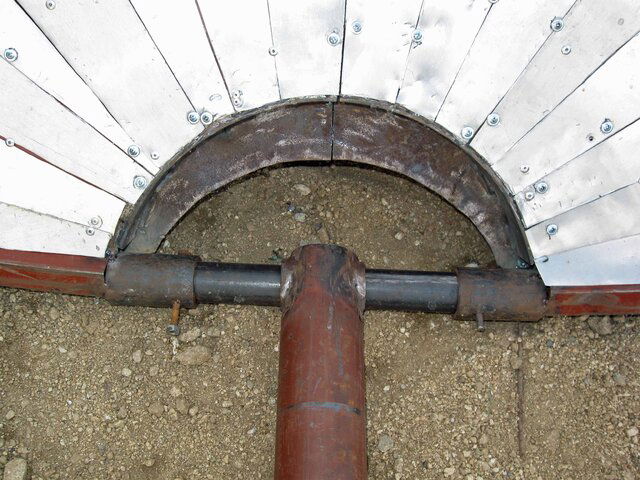quote=Smith, P.;1653579]Man, it's huge and heavy to move it around ... What weight it has now?
Coming from polishing glass lenses experience, how you will hone each sheet to bring total curve to parabolic shape ?
It should be done before painting.[/quote]
I'm going to weigh it before putting it up but I'm guessing not much maybe something like 200-300 lbs. The cold formed steel tubing keeps the weight down.
The parabola was set by the ribs. Within the 10 degree rib spacing, the aluminum sheeting flexes to fit the curve. I used relatively thick sheeting to keep the surface from warbling. I return frequenctly to check the surface with the master rib pattern. And you are correct. Once the paint is on, it will be very difficult to detect where the problems are. I'm really nervous about that.
4.5 meters = 14.8 feet
Hope it doesn't get windy!
It's an offset so the 14.8 is diameter. Just shy of 16 feet tall.
Wind definitely is a concern. I've seen 1.8 M Channel Masters that are built like a tank ripped off their mounts and blown away.
Going to nestle it up next to a wall and close to some other structures to minimize wind effect. And, with the pivot point on the toe, I will be able to flip it over and tie it down for the really big winds. A total of 6 or 8 bolts hold it all together. Everthing else is welded.





